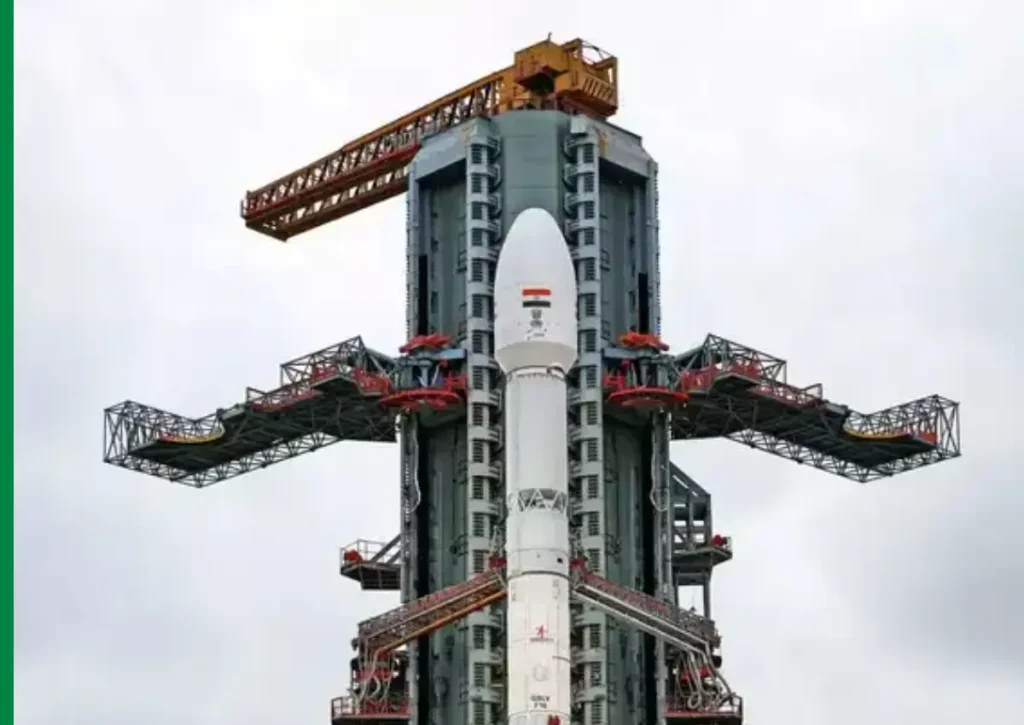On Wednesday, July 30, 2025, history was made in the world of space exploration with the successful launch of the NASA-ISRO Synthetic Aperture Radar (NISAR) satellite, which was launched successfully at 5:40 PM IST in Sriharikota.

This 1.5 billion dollar collaboration between the Indian space research organization (ISRO) and NASA is not merely another satellite launch but a technological breakthrough that is bound to become a revolution of the way we perceive and react to climate change around the world.
Let’s explore the NISAR Satellite Launch success!
NISAR Satellite Launch—The Birth of a Billion-Dollar Partnership
The journey to NISAR’s successful launch began nearly a decade ago when two of the world’s most respected space agencies decided to combine their expertise for a common goal. This collaboration wasn’t born overnight; it required years of careful planning, technological innovation, and diplomatic coordination between India and the United States.
Former ISRO chairperson K Sivan eloquently captured the mission’s significance, describing NISAR as “a very advanced satellite that can capture even the slightest movements on the Earth’s surface.” This capability isn’t just impressive from a technical standpoint—it has the potential to save countless lives by providing early warning systems for natural disasters like volcanic eruptions and landslides.
The 2,393-kilogram satellite now orbits Earth aboard the mighty GSLV Mk II rocket, a 52-meter tall engineering marvel that showcases India’s growing prowess in heavy-lift launch capabilities. This successful deployment demonstrates how international partnerships can leverage each nation’s strengths to achieve extraordinary results.
Technology That Changes Everything
The greatest innovation of NISAR, however, comes in the shape of its dual-frequency synthetic aperture radar that will make it the first project of its kind used in space. Contrary to customary optical satellites, which cannot operate without sunlight and in clear weather, NISAR requires no dependency whatsoever on cloud-free atmospheric conditions. Day or night, rain or shine, this technological masterpiece keeps on taking vital information about our planet.
Possibilities of identification of surface changes as small as several millimeters by means of the satellite expand the universe of opportunities not only in the scientific sphere but also in real life. Just imagine having the ability to check the health of the agricultural crops in far-flung areas, being able to monitor the movements of the glaciers in the Himalayas, or being able to feel slight shifts in the ground, which may signify that an earthquake is about to happen all through space.
NISAR synthetic aperture radar nature operates similarly to that of the radar, which integrates several measurements recorded as the satellite passes overhead forming highly sharp and detailed images of the area on the ground.
With this type of technology, scientists are able to look through forest tops, into the cloud cover, and be able to monitor steadily, irrespective of what the condition of the environment is on the ground.
A Global Game-Changer for Climate Science
The timing of NISAR’s launch couldn’t be more critical. As climate change accelerates and extreme weather events become increasingly common, the need for precise, real-time Earth monitoring has never been greater. NISAR addresses this challenge by mapping nearly all land and ice surfaces every 12 days—a frequency that allows scientists to track rapid changes in Earth systems.
For India, a nation frequently impacted by monsoons, floods, and other climate-related challenges, NISAR’s capabilities offer transformative potential. The satellite’s freely accessible data will empower Indian researchers and disaster management agencies to monitor glacier movements in the Himalayas, detect potential earthquake zones, track agricultural cycles, and manage water resources more effectively.
The implications extend far beyond India’s borders. NISAR’s unprecedented coverage of Antarctica will provide researchers worldwide with crucial data about ice sheet evolution and its impact on global sea levels. This information proves invaluable for coastal communities planning adaptation strategies for rising seas.
Engineering Marvel—From Concept to Reality
The technical achievement represented by NISAR cannot be overstated. The satellite features a massive 12-meter diameter reflector that must be deployed 9 meters away from the main spacecraft using a complex boom system developed by NASA’s Jet Propulsion Laboratory. This engineering challenge required innovative solutions to ensure the delicate antenna could unfurl properly in the harsh environment of space.
The collaboration model employed for NISAR demonstrates how international partnerships can optimize resource allocation and expertise sharing. ISRO contributed the S-band radar system, spacecraft structure, and launch capabilities, while NASA provided the L-band radar, large reflector antenna, and orbital planning expertise. This division of responsibilities allowed both agencies to focus on their areas of strength while learning from each other’s approaches.
The development process wasn’t without challenges. NISAR’s launch faced multiple delays, most recently due to issues with the unfurlable antenna system. However, these setbacks ultimately resulted in a more robust and reliable satellite system, demonstrating the value of thorough testing and quality assurance in complex space missions.
Real-World Impact—Beyond Scientific Discovery
While NISAR’s scientific contributions are significant, its real-world applications make the mission truly valuable for society. The satellite’s ability to monitor agricultural cycles will help farmers and food security planners make informed decisions about crop management and harvest timing. In a world where food security remains a critical challenge, this capability could help optimize agricultural productivity and reduce waste.
Disaster management agencies worldwide eagerly anticipate access to NISAR’s near-real-time data. The satellite’s precision in detecting ground movement could provide early warning systems for landslides in mountainous regions, helping evacuate communities before disasters strike. Similarly, its ability to monitor fault lines and ground deformation could enhance earthquake preparedness efforts.
Urban planners and infrastructure managers will benefit from NISAR’s capacity to monitor ground subsidence and structural stability. As cities continue growing and aging infrastructure faces increasing stress, this monitoring capability becomes essential for maintaining public safety and planning maintenance schedules.
The Next Phase—Deployment and Operations
Following its successful launch, NISAR now enters a carefully orchestrated deployment sequence that will unfold over the coming days and weeks. The initial 8-10 day deployment phase involves extending the satellite’s complex antenna system and verifying all components function correctly in the space environment.
Subsequently, NISAR will undergo a 90-day commissioning phase where scientists conduct daily tests and calibrations to ensure optimal performance. This period involves fine-tuning instruments, verifying data quality, and establishing communication protocols between ground stations in both India and the United States.
The science operations phase begins after commissioning is complete, marking the start of NISAR’s five-year mission to monitor Earth’s changing landscape. During this period, the satellite will generate enormous amounts of data daily, requiring sophisticated processing systems and international cooperation to manage and distribute information effectively.
A Model for Future Collaboration
The success of NISAR creates a very strong precedent internationally to use its collaborative efforts in space to deal with global challenges. Mission helps to show how democratic countries can collaborate in their technological capabilities, financial as well as their scientific means to attain or do things that no individual country could do so on their own.
Such collaboration model is especially counterproductive when the challenges of the human kind become more multifaceted and the national borders are crossed. Natural disasters, climate change and resource management affect all nations regardless of their location, meaning that they need global solutions and global response and that is exactly what NISAR will provide with its ability to monitor the entire Earth.
As Science and Technology Minister Jitendra Singh noted, NISAR represents India’s role as a “Vishwa Bandhu,” or global partner, contributing to humanity’s collective welfare. This mission strengthens India’s position as a reliable partner for future international space endeavors while advancing scientific understanding for the benefit of all nations.
Final thoughts
With the successful launch of NISAR, the era of climate science and Earth observation has just started. In the coming five years, this fantastic satellite will give us the best understanding of the changing systems of our planet and guide the focus of scientists, policymakers and communities to act in a better way to find solutions to issues that take place in nature.
More to the point, NISAR will serve as an indicator of significant forces of international cooperation in terms of global problems solving with the use of advanced technologies and scientific communities. Having entered such an unpredictable climate future, missions such as NISAR will help us get the data, knowledge and international collaboration is needed to create a stronger and more sustainable world in the future.



